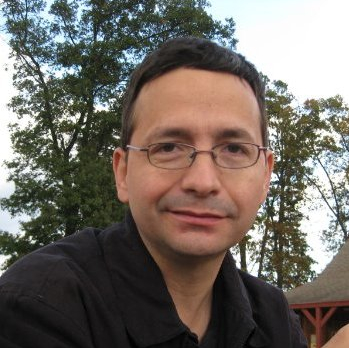
SHARE THIS ARTICLE:
Cadavid, Diego
 Diego Cadavid, MD
Diego Cadavid, MD
Adjunct Associate Professor, Neurology and Neuroscience
New Jersey Medical School, Rutgers, Newark, NJ
Vice President of Clinical Development
Fulcrum Therapeutics, Cambridge, MA
https://njms.rutgers.edu
Treatment of Neurological Lyme Disease
Dr. Diego Cadavid graduated in Medicine and Surgery from the Pontificia Universidad Javeriana in Bogotá, Colombia, in 1991 followed by 3 years of Post-doctoral training in Microbiology and Immunology at The University of Texas Health Science Center in San Antonio, Texas (UTHSCSA), 1 year Internship in Internal Medicine also at UTHSCSA, 3 years of Clinical Neurology Residency training at Georgetown University and 1 year Fellowship training in Neuropathology at the Armed Forces Institute of Pathology, both in Washington, DC. He was for nearly 10 years a Faculty Member in the Department of Neurology and Neuroscience at Rutgers-New Jersey Medical School in Newark, NJ. Between 2008 and 2016 he was a member of the Neurology Clinical Development Group at Biogen in Cambridge, MA and lead of the CNS remyelination Development Group. Between 2008 and 2015 he was Consultant at the Center for Immunology and Inflammatory Diseases at Massachusetts General Hospital in Boston. Over his 25 years career since graduation from Medical School Dr. Cadavid has worked in clinical practice, basic research, clinical research, education, and administration in academia and the biopharmaceutical industry. He has published over 100 peer-reviewed publications, review papers, and book chapters on the fields of borrelial infections (relapsing fever and Lyme disease), multiple sclerosis, cerebral infarction, and progressive multifocal leukoencephalopathy. He is currently Vice President of Clinical Development at Fulcrum Therapeutics, a start-up biotechnology company seeking to develop small molecule treatments for genetic diseases of gene regulation, including Fragile X syndrome and FSHD. He has a non-active medical license in Massachusetts and is currently adjunct Associate Professor of Neurology at Rutgers-New Jersey Medical School, and Fellow of both the American Academy of Neurology and the American Neurological Association. He is married with 3 children.
Conference Lecture Summary
In humans, Borrelia burgdorferi causes Lyme disease. People become infected when bitten by ticks carrying the bacterium. The person may experience symptoms in the joints, skin, muscles, and nervous system (peripheral nerves (nerves outside the brain and spinal cord), the brain, and the spinal cord). Without antibiotic treatment, neurological Lyme disease either may resolve or cause long-term problems. Neurological Lyme disease differs between Europe and the United States, probably because of differences in B. burgdorferi. Limited information exists about which antibiotics are better for the treatment of neurological Lyme disease. A recently completed Cochrane review of the existing evidence found seven trials studying antibiotic treatments for neurological Lyme disease. All but one trial compared different antibiotics. The other trial compared the treatment effects of oral amoxicillin to placebo following initial ceftriaxone treatment. The trials included 450 Europeans. The antibiotics tested were penicillin G, doxycycline, ceftriaxone, and cefotaxime. One of the trials involved children only, while the others included mostly adults. We only selected studies in which treatment allocation was determined by chance (randomly), as such studies provide the best information for comparing the effects of different treatments. Most studies were not blinded (meaning that those taking part and the study staff knew the treatment being given). We could not find any studies of antibiotic treatments for neurological Lyme disease from the United States. No studies assessed the effects of delaying the start of treatment. The seven studies were too different for their results to be combined, so they were analyzed individually. The results showed that none of the studies provided clear evidence that one antibiotic was better than another. One study failed to find evidence that a second and longer treatment with an oral antibiotic (amoxicillin) offered any extra benefit following initial intravenous treatment with ceftriaxone. As none of the other studies used a dummy treatment (placebo), the extra benefit offered by antibiotic treatment over recovery that occurs naturally is unknown. In general, the treatment was tolerated well, although the quality of adverse event reporting in most studies appeared to be low. This systematic review of the existing literature indicate that treatment with penicillin G, doxycycline, ceftriaxone, and cefotaxime produced similarly good outcomes for treatment of neurological Lyme disease in Europe. A second treatment with amoxicillin does not appear to provide added benefit to ceftriaxone. We found no trials of antibiotics for treatment of neurological Lyme disease in the United States that met our inclusion criteria.





